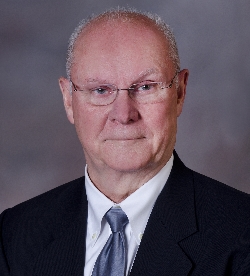Skip to content
 Many thanks to Dr. John Barry for his thoughtful capturing and sharing of these pearls during the sessions at the 2021 meeting Indian Wells, CA.
Many thanks to Dr. John Barry for his thoughtful capturing and sharing of these pearls during the sessions at the 2021 meeting Indian Wells, CA.
- It was great to be back together again in-person.
- Six-month LHRH formulations are a good idea.
- Diagnostic urine tests for PCa are coming of age; will they become an acceptable PCa screening test for PCPs so they won’t have to do those icky DREs?
- Wearable fitness trackers can be used to monitor postoperative patient physical activity.
- Intermediate-risk PCa patients may be candidates for active surveillance if they have favorable genomic prostate cancer scores.
- Partial cystectomy is being rediscovered for the treatment of localized muscle-invasive bladder cancer.
- Thulium is winning the laser race for endoscopic treatment of renal and ureteral stones and tumors.
- Pelvic MRIs during yoga poses show interesting images of women’s lower urinary tracts.
- An fMRI protocol for investigation of CNS pathways that cause or are associated with the overactive bladder has been validated. This is exciting.
- Beta 3 agonists are becoming preferred over antimuscarinics for the pharmacologic treatment of the overactive bladder.
- Testosterone replacement therapy can now be accomplished by injecting it, putting it on one’s skin, snorting it with a gel, or taking a pill. Prescribers and payers need to know the relative costs.
- Point-counter-point sessions are no fun when the combatants agree with each other.
- Most 2-minute poster presentations have too much small print information on the single slide.
- Should we use a capital “F” whenever “foley” appears in front of “catheter?” He really was a great urologist.
- Should we remove the apostrophe from the plural form of an acronym (for example, MRIs instead of MRI’s)?
- If one has been properly introduced by a session moderator, there’s no need for the speaker to repeat it before beginning the presentation.
- Room lights should be dimmed for videos and many slide presentations, especially when letters and numbers are simply a darker shade of the background.
- Not following the WSAUA guidelines for slide design and content makes it difficult for a speaker’s message to be grasped by the audience.
- Low dose CT scans can satisfactorily diagnose urinary tract stones in obese patients.
- A bladder urine culture may not reflect the bug behind a stone.
- Prone ultrasound-guided percutaneous renal access is becoming popular, but fluoroscopy is often added to dilate the tract, pass wires and tubes, and document stone clearance.
- Opened and unused items during a procedure are expenses that can be mitigated with simple check lists.
- Single-use catheters for CIC are probably an unnecessary expense. The UTI rate seems to be the same as that for one-catheter per week. (Three symptomatic UTIs per year is usual for CIC patients.)
- Some urologic oncologists lose track of time when they speak from a podium.
- It you must die, do so before John Prince dies so he can deliver your eulogy at the WSAUA business meeting.
- Nearly 20 percent of AUA members are in the WSAUA.
- See the new AUA microhematuria guideline algorithm. It’s well thought out.
- Nitrofurantoin seems to be the best prophylactic antibiotic for UTI prevention in children.
- Prediction: There will be a US migration from transrectal to transperineal biopsies of the prostate.
- Prediction: PSMA PET CTs will replace bone scans, MRI and CT scans for prostate cancer diagnosis and staging.
- The VA’s Care Assessment Need (CAN) score is better than the “Eye Ball” test to estimate life expectancy for cancer screening and treatment.
- Oncologists often refer to Charlson’s Comorbidity Score or Index, unfortunately, they seem to simply count comorbidities rather than properly use the weighted scoring system.
- Good performance status and response to medical therapy are keys to successful cytoreductuve renal cell carcinoma surgery. A flat response curve after medical therapy provides a 3-6 month window for delayed cytoreductive surgery.
- The Round Table is great fun.
Scroll To Top
 Many thanks to Dr. John Barry for his thoughtful capturing and sharing of these pearls during the sessions at the 2021 meeting Indian Wells, CA.
Many thanks to Dr. John Barry for his thoughtful capturing and sharing of these pearls during the sessions at the 2021 meeting Indian Wells, CA.